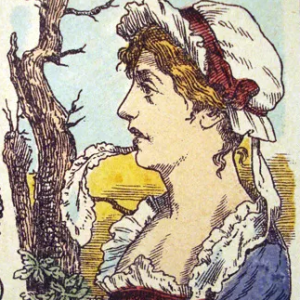Have you heard about the latest math puzzle that’s been buzzing on Twitter? It’s a clever problem featuring a cow, a cozy cottage, and a series of transactions that have left many scratching their heads in confusion. What starts as a seemingly simple brain teaser has sparked lively debates about the correct solution. So, what’s the deal with this cow math puzzle, and why is it so perplexing? Let’s dive into it and uncover the real answer step by step.
The Puzzle: A Tale of Buying and Selling a Cow

The puzzle goes like this:
- You buy a cow for $800.
- You sell the cow for $1000, making a profit of $200.
- You buy the cow again for $1100, but since you already made a profit of $200 from the first transaction, your effective cost for the second purchase is reduced to $900.
- Finally, you sell the cow again for $1300, making a profit of $400 ($1300 – $900).
If you’ve followed the puzzle closely, you might be wondering how much profit you’ve made in total. Is it $600? $200? The correct answer, as it turns out, is $400. Let’s break it down to see why.
Step-by-Step Breakdown of the Cow Math Puzzle
To truly understand this puzzle, we need to go through the transactions carefully and avoid the mental traps that might confuse us. Here’s how it works:
- First Purchase: Buy the Cow for $800 You start by buying the cow for $800. At this point, you’re $800 out of pocket.
- First Sale: Sell the Cow for $1000 You sell the cow for $1000. Since you originally paid $800, this sale results in a profit of $200 ($1000 – $800).
- Second Purchase: Buy the Cow Again for $1100 After selling the cow, you decide to buy it back, but this time for $1100. You’ve now spent $1100, but you still have that earlier $200 profit in hand.
- Second Sale: Sell the Cow Again for $1300 You sell the cow a second time for $1300. Your effective cost at this point, considering your earlier profit, is $900 ($1100 purchase minus $200 profit from the first sale). So, the profit from this second sale is $400 ($1300 – $900).
Total Profit: Adding It All Up
Now let’s calculate the total profit from the entire sequence:
- Profit from the first sale: $200.
- Profit from the second sale: $400.
But wait, that doesn’t mean you should add these profits together. Instead, the overall profit from the entire set of transactions is simply the profit from the second sale: $400. Why? Because the first $200 profit is already factored into the calculation of the second transaction’s effective cost. The puzzle tricks people into thinking that both profits should be added, but this leads to a mistaken conclusion.
Why This Puzzle Tricks Us

The reason this puzzle is so tricky is that it plays with our perception of profit and loss. It’s easy to get caught up in each individual transaction and lose sight of the bigger picture. The key is to follow the entire sequence of events and focus on the final net profit from all transactions combined.
At first glance, the puzzle seems to suggest that you’ve made two separate profits—$200 from the first sale and $400 from the second—leading people to think they should be added together. However, the correct approach is to look at the total profit across the entire process, which is $400, not $600.
Mental Shortcuts and How They Lead Us Astray
The cow math puzzle also serves as a reminder of the cognitive traps we can fall into when we take mental shortcuts. In many cases, we rely on assumptions or try to simplify problems by breaking them down into separate parts. While this approach can be useful, it sometimes leads us astray—especially when it comes to calculating profit, which involves looking at the entire picture rather than focusing on isolated parts.
By carefully analyzing each step and keeping track of the overall net effect, you can avoid these pitfalls and arrive at the correct solution.
Conclusion: A Fun, Engaging Puzzle with a Powerful Lesson
The viral cow math puzzle is more than just a fun brain teaser—it’s an exercise in critical thinking, patience, and problem-solving. The puzzle challenges us to step back, avoid jumping to conclusions, and carefully consider the entire sequence of events. In doing so, it teaches us an important lesson about how easy it is to miscalculate profits by focusing on individual transactions instead of the whole picture.
Whether you’ve cracked the puzzle or are still working on it, engaging with challenges like these offers valuable cognitive benefits. And at the end of the day, solving a tricky puzzle not only sharpens your mind but also brings a satisfying sense of accomplishment. So, the next time you encounter a brain teaser like this, remember to approach it with clear thinking, avoid shortcuts, and enjoy the mental workout!


